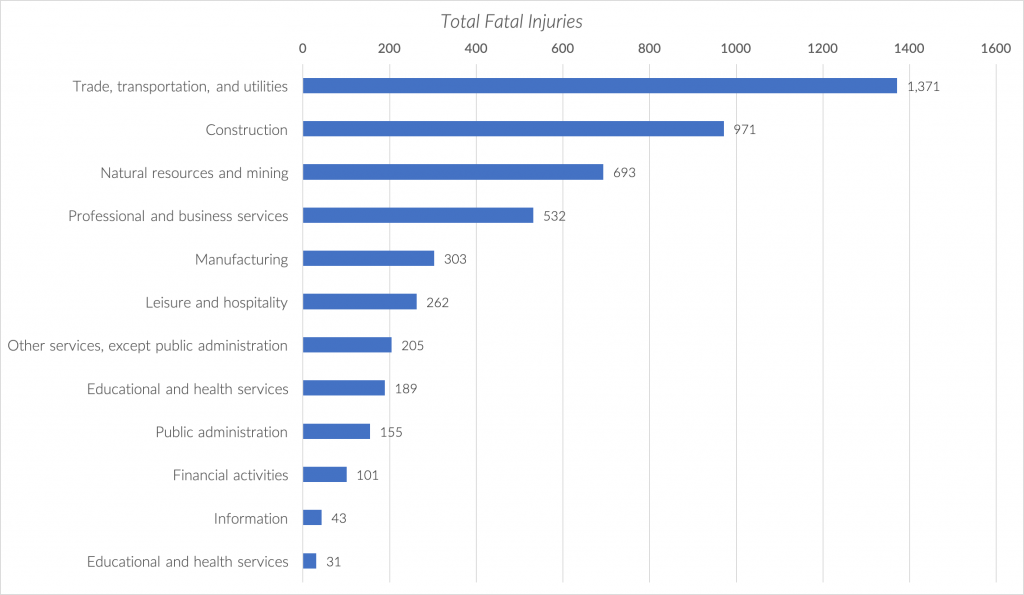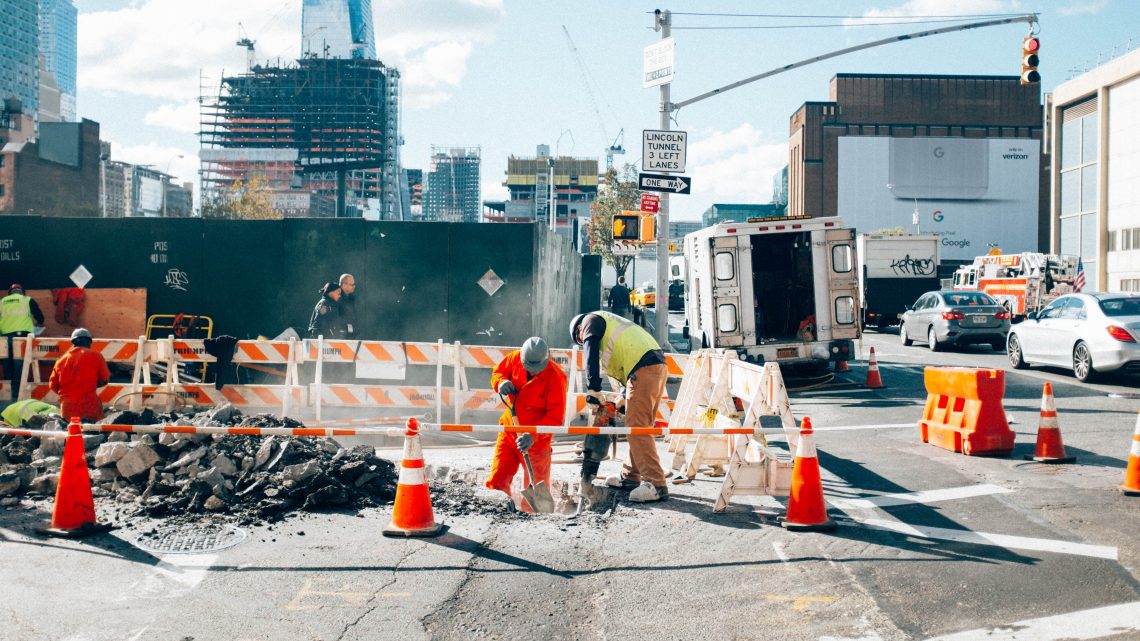All industries strive to achieve workplace safety for all of their workers. Creating a positive environment for safety requires an effort from top to bottom.
All executives know (or at least should know) and appreciate the importance of safety in the workplace, and the fact that safety actually saves money in the long run.
However, achieving safety has proven to be more challenging in some industries than others.
With that in mind, we decided to study the most fatal industries for workers using data from The Occupational Safety and Health Administration for the year 2017.
12 Most Fatal Industries For Workers
The following chart shows the top 12 most fatal industries for workers in the USA:
*Data retrieved from The Occupational Safety and Health Administration – Workplace Injury, Illness and Fatality Statistics – 2017.
For people working in the first four industries, the risk of a life-threatening accident in a remote location comes with the job. One pattern that we notice quickly when looking at the chart is that the safest workplaces are ones that are indoors and most often than not require a higher level of education. According to workers compensation law firm Hilley & Frieder, the most dangerous industries are those that require workers to be outdoors all or most of the time and often involve some type of equipment operation.
This following table dives deep into the causes of the fatalities we’ve mentioned in the most dangerous industries for workers. By analyzing the data we can tell which causes were most fatal to workers. Transportation incidents top the list, followed by Falls, Slips, and Trips, and Injuries by persons or animals follows in third place.
| Industry | Persons or animals | Transportation incidents | Fires and explosions | Falls, slips, trips | Harmful substances | Contact with objects |
| Trade, transportation, and utilities | 217 | 799 | 22 | 123 | 98 | 106 |
| Construction | 56 | 234 | 15 | 386 | 145 | 133 |
| Natural resources and mining | 56 | 329 | 26 | 45 | 31 | 205 |
| Professional and business services | 71 | 165 | 9 | 125 | 64 | 95 |
| Manufacturing | 31 | 79 | 21 | 50 | 41 | 79 |
| Leisure and hospitality | 100 | 66 | 6 | 35 | 46 | 8 |
| Other services, except public administration | 55 | 57 | 8 | 25 | 24 | 36 |
| Educational and health services | 47 | 69 | – | 29 | 30 | 7 |
| Public administration | 55 | 67 | 8 | 11 | 8 | 4 |
| Financial activities | 33 | 28 | – | 16 | 19 | 4 |
| Information | 6 | 22 | – | 9 | 5 | – |
| Educational and health services | 9 | 11 | – | 9 | – | – |
*Data retrieved from The Occupational Safety and Health Administration – Workplace Injury, Illness and Fatality Statistics – 2017.
Non-Fatal Injuries Deserve Attention Too
Besides accidents that lead to fatalities, workers in these industries are highly susceptible to non-fatal injuries as well (which we did not include). Unfortunately, the rates of non-fatal injuries among the industries listed are far higher than the national average. That is definitely something else to ponder.
Your Rights As A Worker
US law ensures that employees who are injured through a work-related accident are entitled to workers’ compensation benefits regardless of who was at fault for the accident (except in some rare cases). The benefits under workers’ compensation commonly include a percentage of the injured workers’ salary if they are unable to work while in recovery, medical expenses, and rehabilitative training should they need it.
Talk To A Workers’ Compensation Attorney
Unfortunately, more often than not the company will attempt to reduce or completely deny the amount of workers’ compensation the injured party deserves. That’s why people in this situation should consider contacting a local injury lawyer that’ll be able to walk them through the whole process and make sure the injured party receives their full compensation.





No Comment